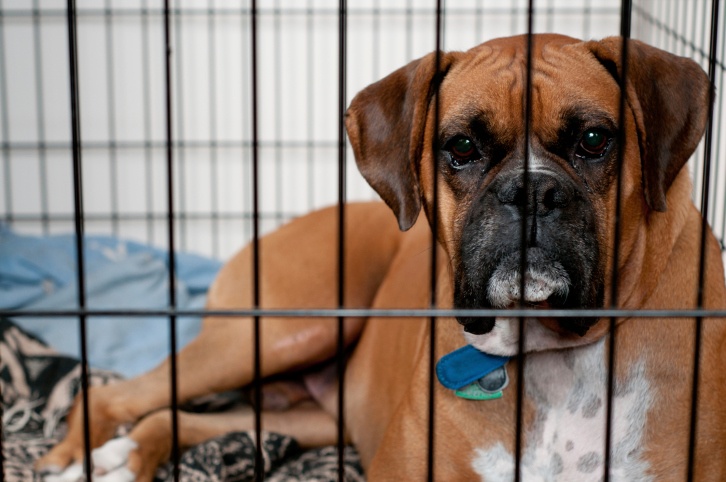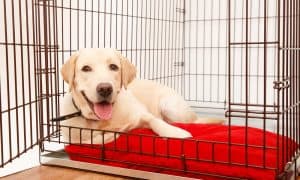“This post contains affiliate links, and I will be compensated if you make a purchase after clicking on my links.”

Most of the emails I receive from struggling dog owners stem from a lack of structure and boundaries in their dog’s lives. When most owners have an issue with their dog, they look for the one thing they can do in order to fix the problem. I get asked all the time, “How do I correct my dog for….” That is the wrong mentality to have. Corrections should not be our default way of communicating to our dogs, rather we should lay a proper foundation of structure, leadership, and boundaries. In doing so, we can prevent and solve most issues.
First, you’ll need to choose the proper size and type of crate.
A comprehensive training approach is fair to the dog and elicits the best outcome for the owner. One integral component is a structured crate protocol. When I suggest a crate, I am not saying to use it for unusual amount of time and never provide freedom, but we must remember: freedom is NOT entitled, it is earned. A crate also taps into the dog’s naturalistic tendency to feel safe and secure in a “den”.
A crate will help your dog get into far less mischief (i.e. destroying items in the home, barking, displays of aggression, etc.) because they are no longer roaming freely around the house/yard. Your dog SHOULD have ample time out of the crate, but that time must be supervised. Supervised freedom is one of the most underutilized concepts in dog training. You need to be present to keep your dog safe, prevent unwanted behavior, and teach proper behavior. This is a MUST.
Entering, exiting, and residing in the crate should be calm and controlled experiences. In conjunction with the structured crate protocol outline below, you never want to force your dog in the crate. Slow progression will make this experience a positive one.
- Say your dog’s name, followed by the command “Crate”. Use gentle leash pressure to guide your dog in the crate. Release leash pressure as soon they begin to move. The goal is for your dog to learn the “Crate” command so you can send them to the crate without requiring a leash.
- Your dog should be calm when entering and exiting the crate. They should never barge out of the crate, only exiting when given the release command of “Free”.
- Your dog needs to learn the concept that “calmness gets rewarded and hyperactivity/excitement gets discouraged”. The quicker your dog gets calm, the sooner they get out of the crate and on with what they want to do.
- If your dog starts to get pushy in order to get out, opening and closing of the door will clearly communicate to your dog whether they are doing the correct thing or not. You only open the door when they are calm (which is the desired behavior) and close the door if they are being hyperactive/pushy (unwanted behavior).
- We are intentionally not using treats because they add unnecessary excitement to an already hyperactive dog/situation. Your verbal praise (ex. Good boy or Good girl) and exiting the crate make for a sufficient reward. The sooner your dog learns to associate the crate with calmness, the better things will be.
- As with all aspects of dog training, consistency is key. The structured crate protocol is used every time the dog enters/exits the crate.
Most “bad behaviors” that plague so many dog owners can be prevented or solved through proper boundaries, structure, and leadership. A structured crate protocol is just one aspect that lends itself to necessary structure. It also provides owners with the peace of mind in knowing their dog will get into less mischief and be safer when unsupervised.
Steve Reid is a Certified Dog Trainer and owner of S.R. Dog Training in Westchester, NY. For more information about S. R. Dog Training and to sign-up for his newsletter, visit www.srdogtraining.com. Please also become a fan of Steve on Facebook at www.Facebook.com/SRDogTraining.
























Elly C
says:Please help. My dog has destroyed 2 crates and has separation anxiety whenever I leave. He poops and pees on the floor, has chewed up 8 doors, and it is causing big problems in my marriage. My husband wants to "get rd of the dog" but my dog is 10 yrs old and no one would want him anyway. What do I do?